Constant Coefficient Homogeneous Systems I
We’ll now begin our study of the homogeneous system
where is an constant matrix. Since is continuous on , Theorem thmtype:10.2.1 implies that all solutions of (eq:10.4.1) are defined on . Therefore, when we speak of solutions of , we’ll mean solutions on .In this section we assume that all the eigenvalues of are real and that has a set of linearly independent eigenvectors. In the next two sections we consider the cases where some of the eigenvalues of are complex, or where does not have linearly independent eigenvectors.
In Example example:10.3.2 we showed that the vector functions form a fundamental set of solutions of the system
but we did not show how we obtained and in the first place. To see how these solutions can be obtained we write (eq:10.4.2) as and look for solutions of the form where , , and are constants to be determined. Differentiating (eq:10.4.4) yields Substituting this and (eq:10.4.4) into (eq:10.4.3) and canceling the common factor yields For a given , this is a homogeneous algebraic system, since it can be rewritten as The trivial solution of this system isn’t useful, since it corresponds to the trivial solution of (eq:10.4.3), which can’t be part of a fundamental set of solutions of (eq:10.4.2). Therefore we consider only those values of for which (eq:10.4.5) has nontrivial solutions. These are the values of for which the determinant of (eq:10.4.5) is zero; that is,Taking in (eq:10.4.5) yields
Taking in (eq:10.4.5) yields the system
In (eq:10.4.6) and (eq:10.4.7) the constant coefficients in the arguments of the exponential functions are the eigenvalues of the coefficient matrix in (eq:10.4.2), and the vector coefficients of the exponential functions are associated eigenvectors. This illustrates the next theorem.
- Proof
- Differentiating and recalling that yields
This shows that is a solution of .
The Wronskian of is Since the columns of the determinant on the right are , which are assumed to be linearly independent, the determinant is nonzero. Therefore Theorem thmtype:10.3.3 implies that is a fundamental set of solutions of .
item:10.4.1b To satisfy the initial condition in (eq:10.4.9), we must choose and in (eq:10.4.11) so that This is equivalent to the system
item:10.4.2b To satisfy the initial condition in (eq:10.4.13) we must choose , , in (eq:10.4.15) so that Solving this system yields , , . Hence, the solution of (eq:10.4.13) is
Geometric Properties of Solutions when
We’ll now consider the geometric properties of solutions of a constant coefficient system
It is convenient to think of a “- plane,” where a point is identified by rectangular coordinates . If is a non-constant solution of (eq:10.4.18), then the point moves along a curve in the - plane as varies from to . We call the trajectory of . (We also say that is a trajectory of the system (eq:10.4.18).) It’s important to note that is the trajectory of infinitely many solutions of (eq:10.4.18), since if is any real number, then is a solution of (eq:10.4.18) and also moves along as varies from to . Moreover, Exercise exer:10.4.28implies that distinct trajectories of (eq:10.4.18) can’t intersect, and that two solutions and of (eq:10.4.18) have the same trajectory if and only if for some .From Exercise exer:10.4.28a trajectory of a nontrivial solution of (eq:10.4.18) can’t contain , which we define to be the trajectory of the trivial solution . More generally, if is a constant solution of (eq:10.4.18) (which could occur if zero is an eigenvalue of the matrix of (eq:10.4.18)), we define the trajectory of to be the single point .
To be specific, this is the question: What do the trajectories look like, and how are they traversed? In this section we’ll answer this question, assuming that the matrix of (eq:10.4.18) has real eigenvalues and with associated linearly independent eigenvectors and . Then the general solution of (eq:10.4.18) is
We’ll consider other situations in the next two sections.We leave it to you to classify the trajectories of (eq:10.4.18) if zero is an eigenvalue of . We’ll confine our attention here to the case where both eigenvalues are nonzero. In this case the simplest situation is where , so (eq:10.4.19) becomes Since and are linearly independent, an arbitrary vector can be written as . Therefore the general solution of (eq:10.4.18) can be written as where is an arbitrary -vector, and the trajectories of nontrivial solutions of (eq:10.4.18) are half-lines through (but not including) the origin. The direction of motion is away from the origin if , as shown in the figure.
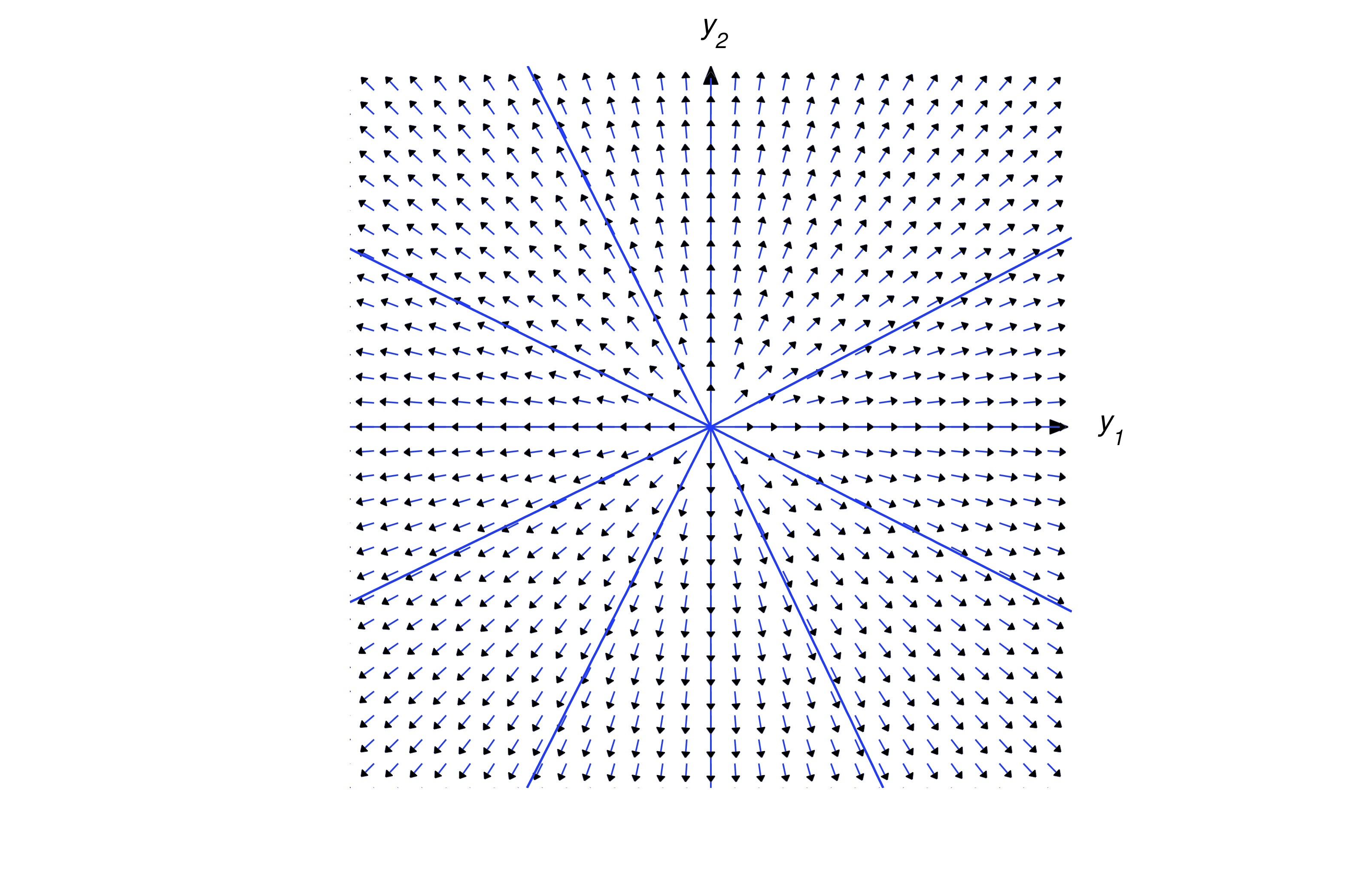
The direction of motion is toward the origin if , as shown in the figure.
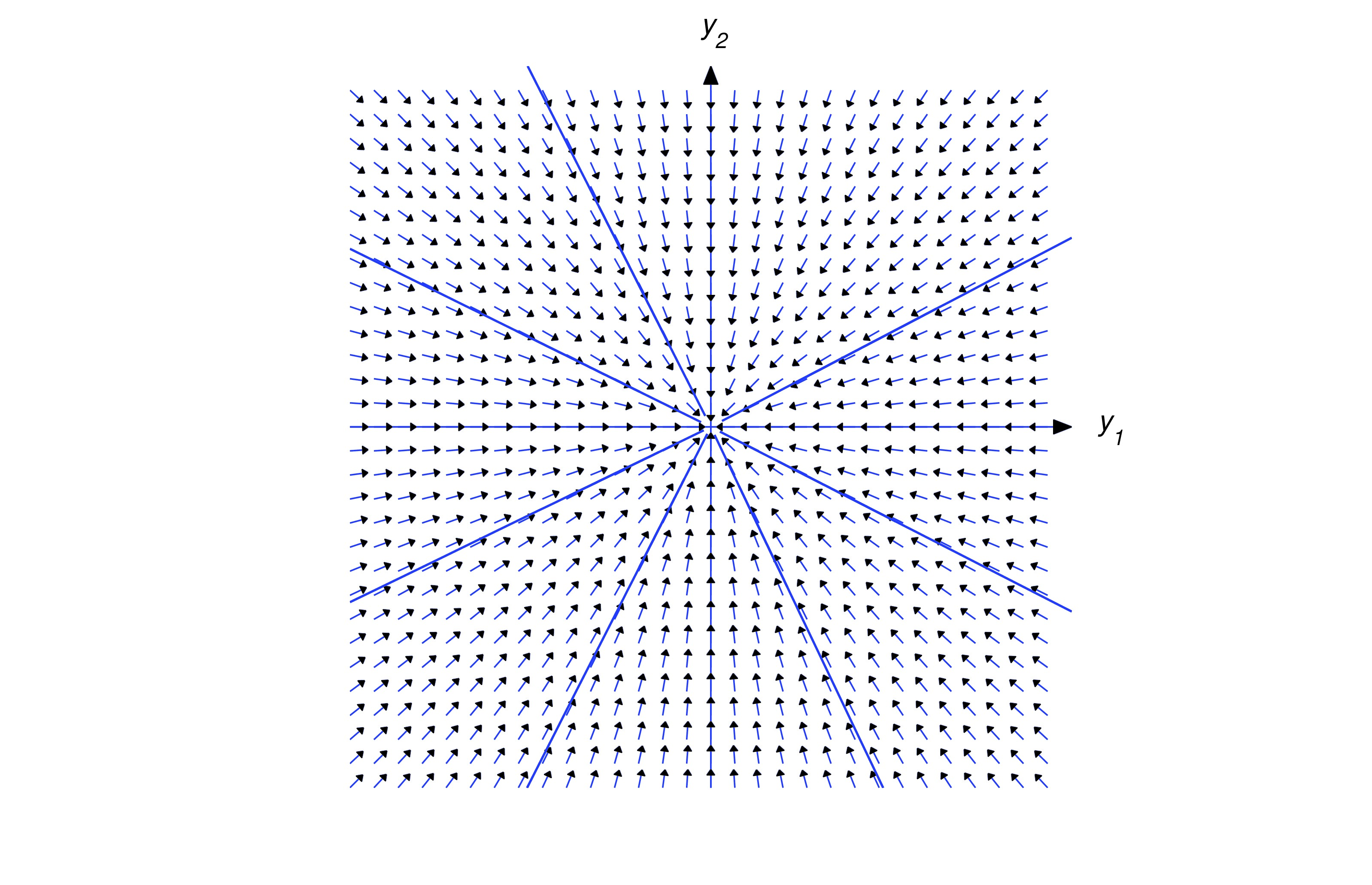
Now suppose , and let and denote lines through the origin parallel to and , respectively. By a half-line of (or ), we mean either of the rays obtained by removing the origin from (or ).
Letting in (eq:10.4.19) yields . If , the trajectory defined by this solution is a half-line of . The direction of motion is away from the origin if , toward the origin if . Similarly, the trajectory of with is a half-line of .
Henceforth, we assume that and in (eq:10.4.19) are both nonzero. In this case, the trajectory of (eq:10.4.19) can’t intersect or , since every point on these lines is on the trajectory of a solution for which either or . (Remember: distinct trajectories can’t intersect!). Therefore the trajectory of (eq:10.4.19) must lie entirely in one of the four open sectors bounded by and , but do not any point on or . Since the initial point defined by is on the trajectory, we can determine which sector contains the trajectory from the signs of and , as shown in the figure.
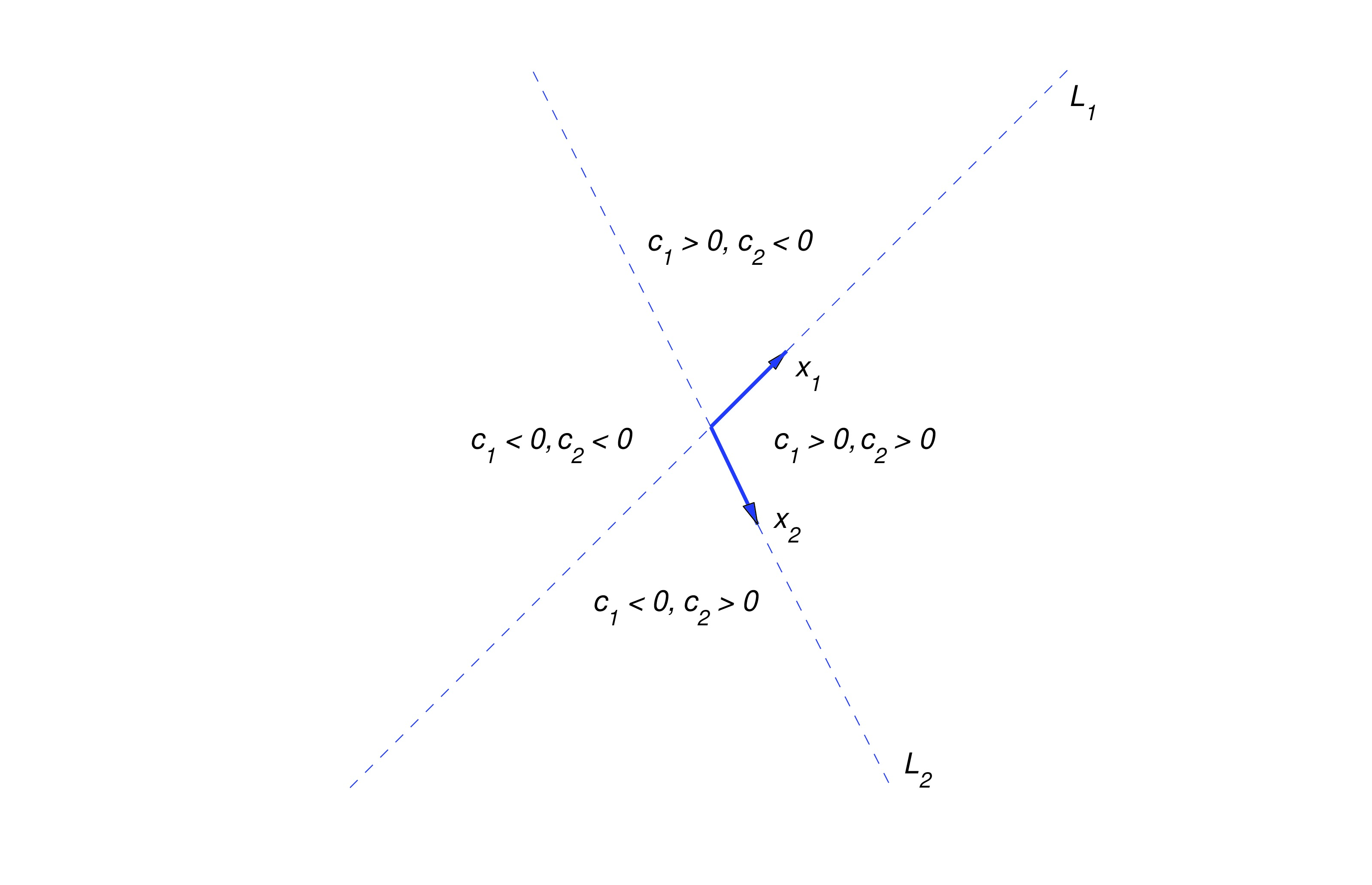
The direction of in (eq:10.4.19) is the same as that of
and of Since the right side of (eq:10.4.20) approaches as , the trajectory is asymptotically parallel to as . Since the right side of (eq:10.4.21) approaches as , the trajectory is asymptotically parallel to as .The shape and direction of traversal of the trajectory of (eq:10.4.19) depend upon whether and are both positive, both negative, or of opposite signs. We’ll now analyze these three cases.
Henceforth denote the length of the vector .
Case 1:
The figure below shows some typical trajectories.
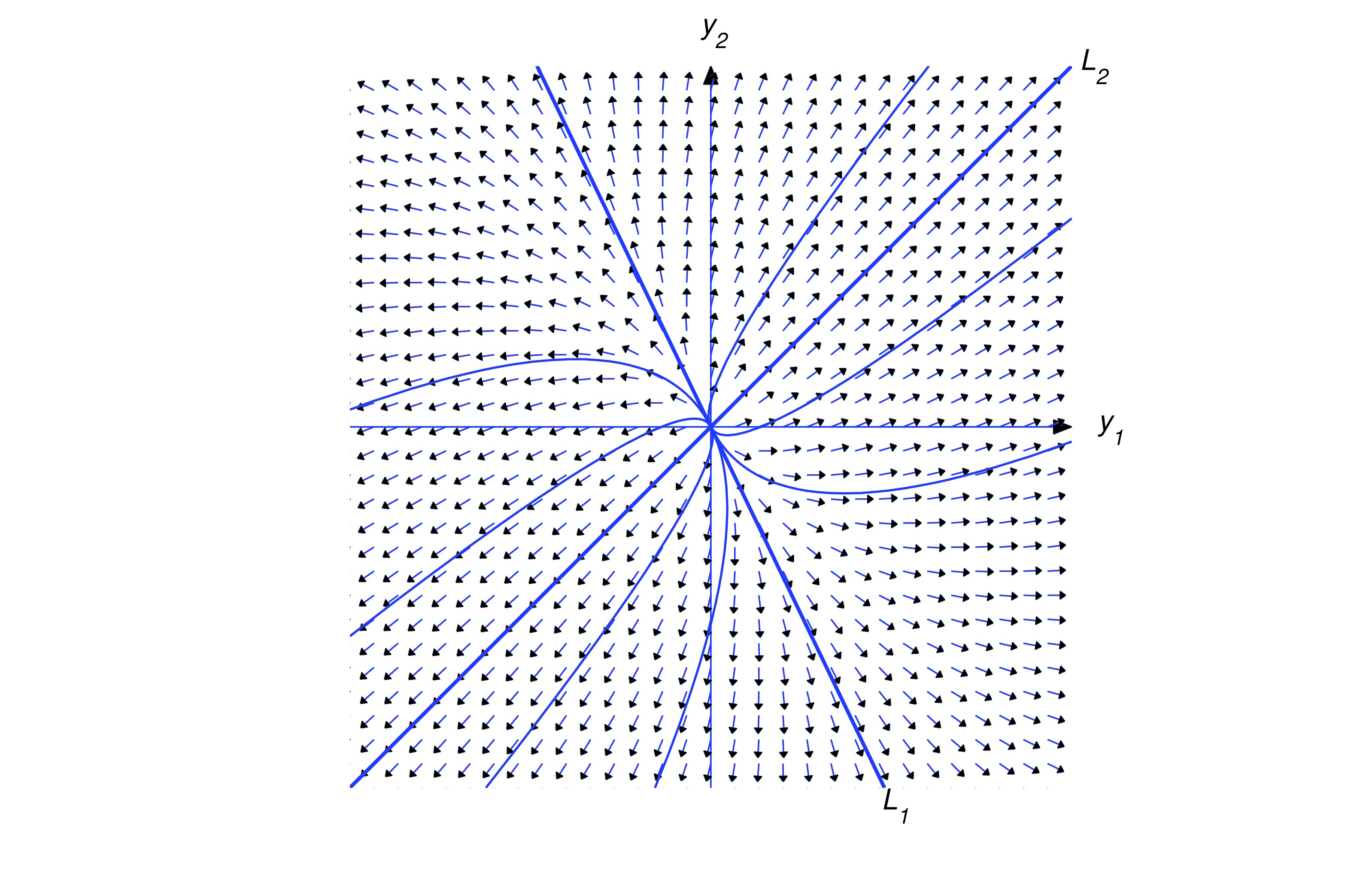
In this case, , so the trajectory is not only asymptotically parallel to as , but is actually asymptotically tangent to at the origin. On the other hand, and so, although the trajectory is asymptotically parallel to as , it’s not asymptotically tangent to . The direction of motion along each trajectory is away from the origin.
Case 2:
The figure below shows some typical trajectories.
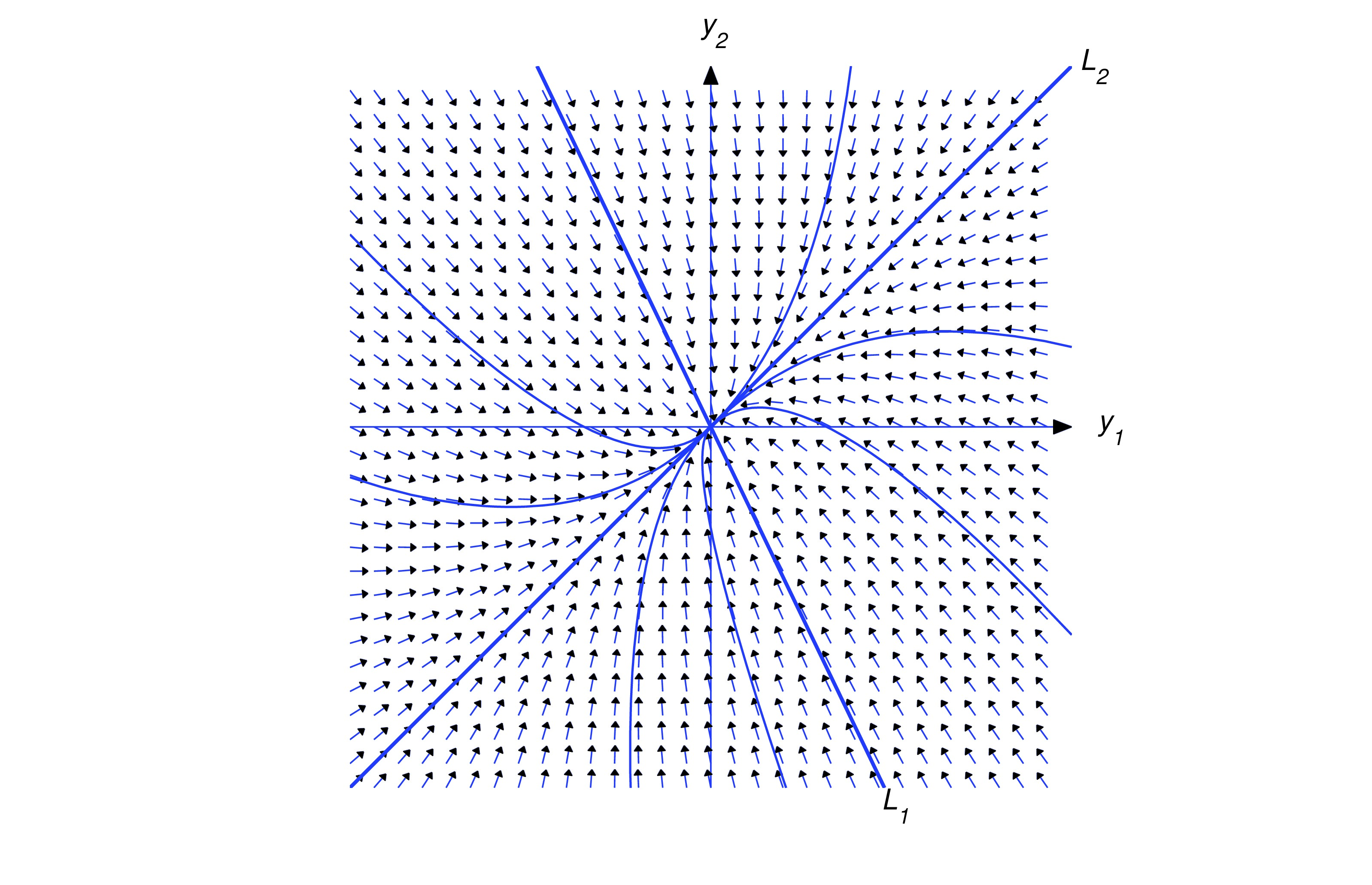
In this case, , so the trajectory is asymptotically tangent to at the origin as . On the other hand, and so, although the trajectory is asymptotically parallel to as , it’s not asymptotically tangent to it. The direction of motion along each trajectory is toward the origin.
Case 3:
The figure below shows some typical trajectories.
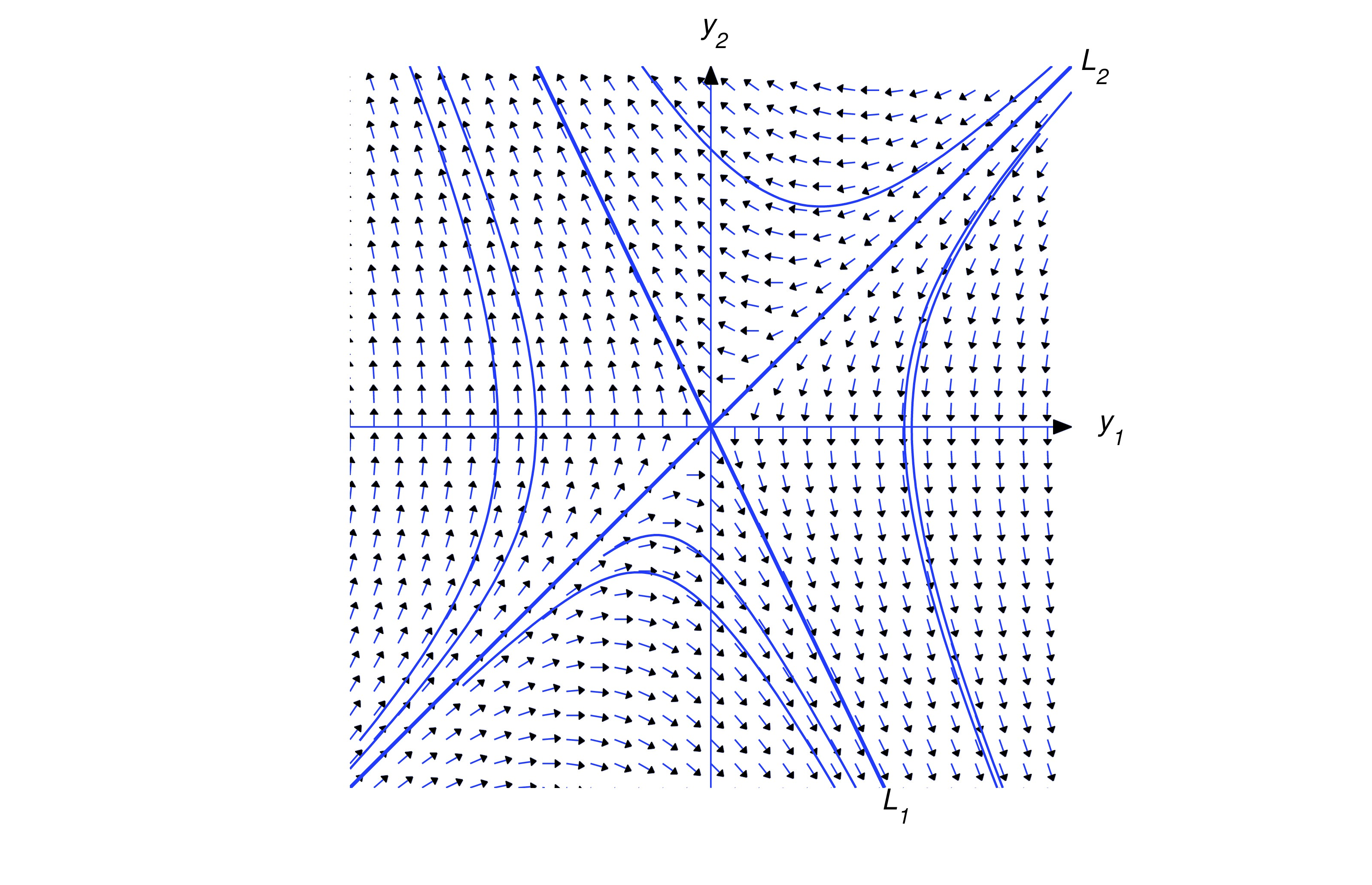
In this case, so the trajectory is asymptotically tangent to as . Similarly, so the trajectory is asymptotically tangent to as . The direction of motion is toward the origin on and away from the origin on . The direction of motion along any other trajectory is away from , toward .
Text Source
Trench, William F., ”Elementary Differential Equations” (2013). Faculty Authored and Edited Books & CDs. 8. (CC-BY-NC-SA)